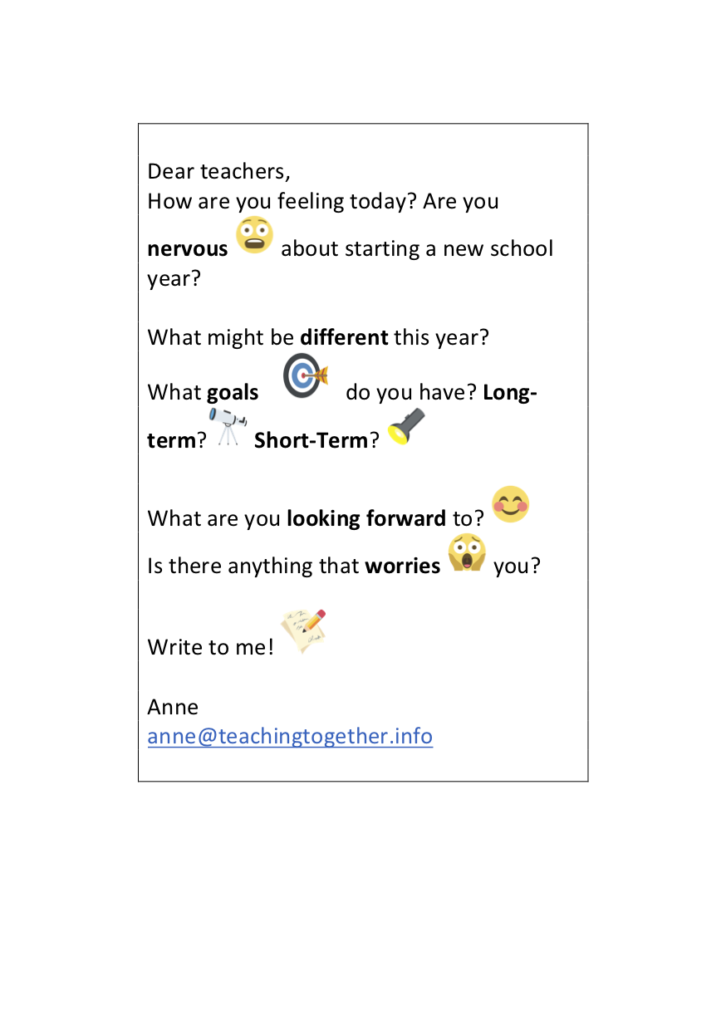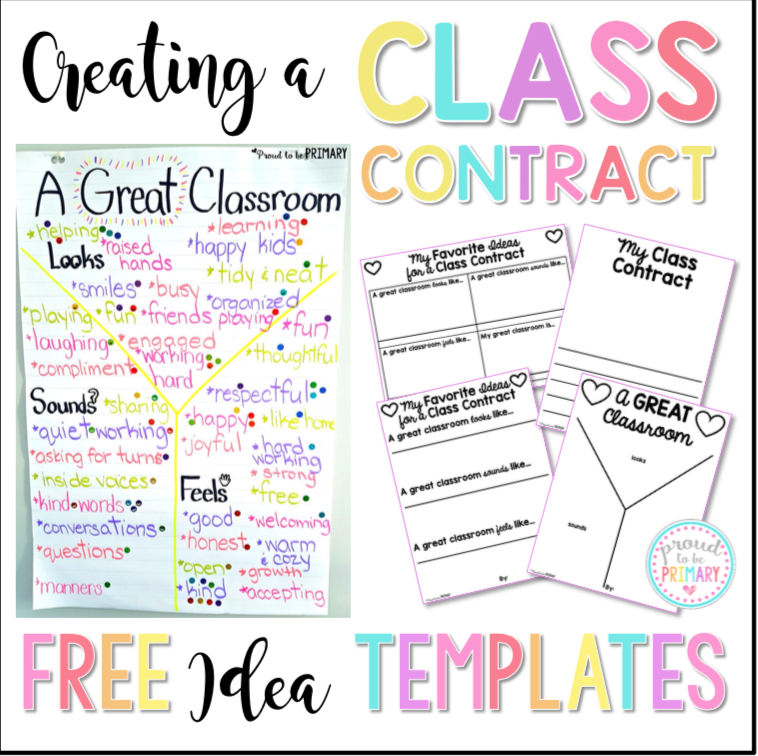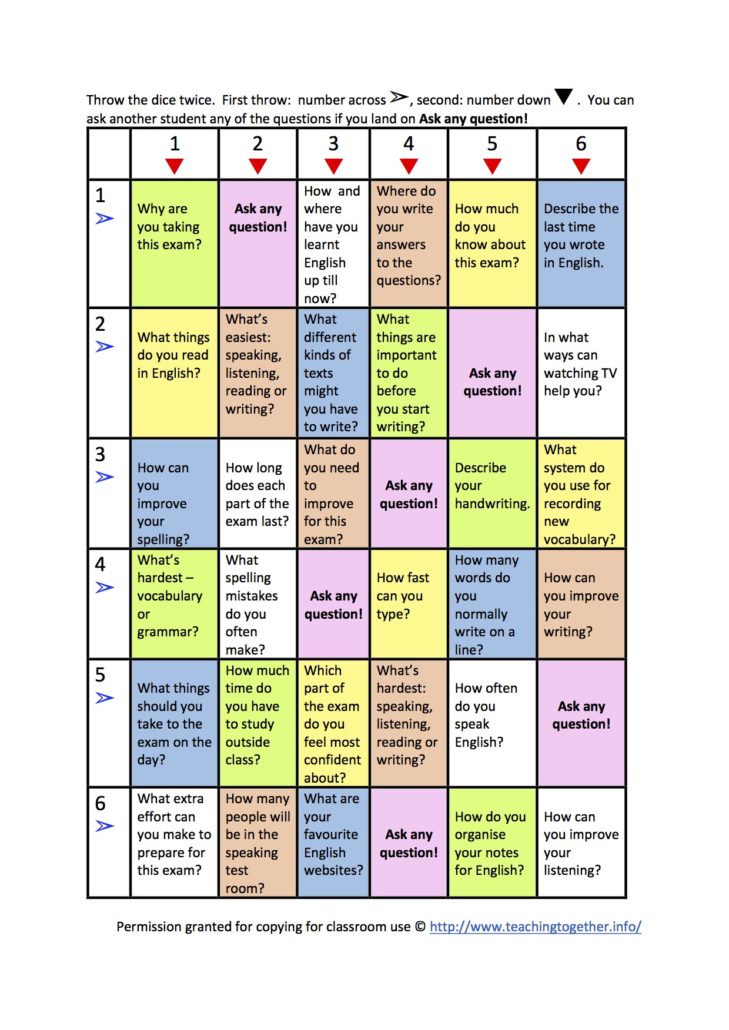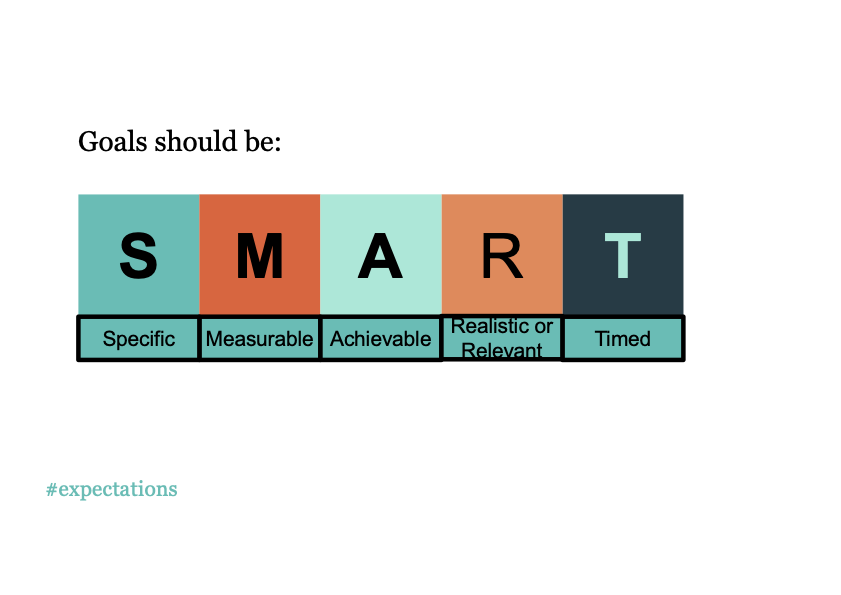Making learning accessible to everyone: #expectations
In this second post after the webinar Making Learning Accessible to Everyone, I’m going to be writing about setting goals and expectations with students.
You can watch the recording of the Cambridge Live webinar here.
Sharing goals and expectations
How do you start classes with a new group? Or, how do you start the year with a group of students you already know?
Personally, I like to write a letter to my groups. I tell them about me and ask them to tell me about themselves.
I use their replies to get to know them, to see what they’re worried about or interested in.
And to assess their writing skills too!
This is the kind of letter I would write to a group of teachers I’m going to be training.

James Fuller, Teacher Educator and Director of Studies in Zaragoza, told me he gets students to write down a goal they have for learning English.
Then, they talk about SMART goals.
Goals should be:
Specific – not vague
Measurable – How are you going to know how far you’ve got?
Achievable – realistic – eg not wanting to know every word in English or speak like a native!
Relevant and realistic – how much time can you spend? Usually, no one can commit to every day, so perhaps 3 times a week?
Timed – by when?. The end of the term, year, this unit?
Next, James says he asks his students to rewrite their goals, making them SMART.
James’s Tip:
Provide some ‘guiding’ input
(e.g. ”If you’re goal is to improve your reading ability because you want to read more books in English, do you feel you should read more in English?”).
If you’re interested in reading more about SMART goals, there’s a great blog post by Marcin Lewandowski the World of Better Learning which talks about expectations and SMART goals.
There are lots of ways of finding out about students’ expectations. A survey, an interview, a poll, a test, a needs analysis. Whichever you use, you’re doing something very important in my opinion – finding out more about your students and their needs and wants.
Class contracts
Another thing you can do so that everyone has things clear is to draw up a class contract.
In the webinar, I was very happy to be able to share these wonderful activities from Proud to be Primary.

First, students say and write words for what a great classroom looks, sounds and feels like.
Then, each student chooses their favourite thing to see, hear and feel to make their class contract.
Exam class expectations
And if you are setting and finding out about students in exam preparation classes, you could use this board game I created. I wrote about it here.

You can find many of the resources I mentioned in the webinar and in this post on this Wakelet I created for the webinar.
If you liked this post, then you might also like my previous post on Smooth Starts, which was the first part of my webinar for Cambridge Live.

